1. Burke ZD, Tosh D. Barrett’s metaplasia as a paradigm for understanding the development of cancer. Curr Opin Genet Dev. 2012; 22:494–499.
2. Wang DH, Clemons NJ, Miyashita T, et al. Aberrant epithelial-mesenchymal Hedgehog signaling characterizes Barrett’s metaplasia. Gastroenterology. 2010; 138:1810–1822.
3. Lagergren J, Lagergren P. Recent developments in esophageal adenocarcinoma. CA Cancer J Clin. 2013; 63:232–248.
4. Shaheen NJ, Falk GW, Iyer PG, et al. ACG clinical guideline: diagnosis and management of Barrett’s esophagus. Am J Gastroenterol. 2016; 111:30–50.
5. Pech O, May A, Manner H, et al. Long-term efficacy and safety of endoscopic resection for patients with mucosal adenocarcinoma of the esophagus. Gastroenterology. 2014; 146:652–660.
6. Kolb JM, Wani S. Endoscopic eradication therapy for Barrett’s oesophagus: state of the art. Curr Opin Gastroenterol. 2020; 36:351–358.
7. Garman KS, Shaheen NJ. Ablative therapies for Barrett’s esophagus. Curr Gastroenterol Rep. 2011; 13:226–239.
8. Ganz RA, Utley DS, Stern RA, et al. Complete ablation of esophageal epithelium with a balloon-based bipolar electrode: a phased evaluation in the porcine and in the human esophagus. Gastrointest Endosc. 2004; 60:1002–1010.
9. Dunkin BJ, Martinez J, Bejarano PA, et al. Thin-layer ablation of human esophageal epithelium using a bipolar radiofrequency balloon device. Surg Endosc. 2006; 20:125–130.
10. van Vilsteren FG, Pouw RE, Seewald S, et al. Stepwise radical endoscopic resection versus radiofrequency ablation for Barrett’s oesophagus with high-grade dysplasia or early cancer: a multicentre randomised trial. Gut. 2011; 60:765–773.
11. Kolb JM, Shah S, Chahine A, et al. Hybrid argon plasma coagulation for Barrett’s esophagus. VideoGIE. 2021; 6:339–341.
12. Moher D, Liberati A, Tetzlaff J, et al. Preferred reporting items for systematic reviews and meta-analyses: the PRISMA statement. Ann Intern Med. 2009; 151:264–269.
13. Cotton PB, Eisen GM, Aabakken L, et al. A lexicon for endoscopic adverse events: report of an ASGE workshop. Gastrointest Endosc. 2010; 71:446–454.
14. Hozo SP, Djulbegovic B, Hozo I. Estimating the mean and variance from the median, range, and the size of a sample. BMC Med Res Methodol. 2005; 5:13.
15. Peterson J, Welch V, Losos M, et al. The Newcastle-Ottawa scale (NOS) for assessing the quality of nonrandomized studies in meta-analysis. Ottawa: Ottawa Hospital Research Institute;2011. p. 1–12.
16. Murad MH, Sultan S, Haffar S, et al. Methodological quality and synthesis of case series and case reports. BMJ Evid Based Med. 2018; 23:60–63.
17. Bazerbachi F, Sawas T, Vargas EJ, et al. Metal stents versus plastic stents for the management of pancreatic walled-off necrosis: a systematic review and meta-analysis. Gastrointest Endosc. 2018; 87:30–42.
18. Lin L, Xu C. Arcsine-based transformations for meta-analysis of proportions: pros, cons, and alternatives. Health Sci Rep. 2020; 3:e178.
19. Nyaga VN, Arbyn M, Aerts M. Metaprop: a Stata command to perform meta-analysis of binomial data. Arch Public Health. 2014; 72:39.
20. Egger M, Davey Smith G, Schneider M, et al. Bias in meta-analysis detected by a simple, graphical test. BMJ. 1997; 315:629–634.
21. Easterbrook PJ, Berlin JA, Gopalan R, et al. Publication bias in clinical research. Lancet. 1991; 337:867–872.
22. Viechtbauer W. Conducting meta-analyses in R with the metafor package. J Stat Softw. 2010; 36:1–48.
23. Barker TH, Migliavaca CB, Stein C, et al. Conducting proportional meta-analysis in different types of systematic reviews: a guide for synthesisers of evidence. BMC Med Res Methodol. 2021; 21:189.
24. Han J, Shimizu T, Yu A, et al. Efficacy, tolerance, and safety of hybrid argon plasma coagulation for the treatment of Barrett’s esophagus: a US pilot study. Am J Gastroenterol. 2018; 113:S213–S214.
25. Nieto J, Casas D. 935 Salvage hybrid APC after failed radiofrequency ablation and cryotherapy for Barrett’s esophagus. Am J Gastroenterol. 2019; 114:S544–S545.
26. Kroupa R, Dastych M, Konečný Š, et al. Hybrid argon plasma coagulation in the ablation treatment of Barrett’s esophagus-long term results. United European Gastroenterol J. 2021; 9 (Supplement):297.
27. Trindade AJ, Wee D, Wander P, et al. Successful treatment of refractory Barrett’s neoplasia with hybrid argon plasma coagulation: a case series. Endoscopy. 2020; 52:812–813.
28. Arshad HM, Ahsan N, Aldridge T, et al. Safety and efficacy of endoscopic hybridapc for management of Barrett’s esophagus. Gastrointest Endosc. 2017; 85(5 Supplement):AB562–AB563.
29. Staudenmann DA, Skacel EP, Tsoutsman T, et al. Safety and long-term efficacy of hybrid-argon plasma coagulation for the treatment of Barrett’s esophagus: an Australian pilot study (with video). Int J Gastrointest Interv. 2021; 10:128–132.
30. Knabe M, Beyna T, Rösch T, et al. Hybrid APC in combination with resection for the endoscopic treatment of neoplastic Barrett’s esophagus: a prospective, multicenter study. Am J Gastroenterol. 2022; 117:110–119.
31. Manner H, May A, Kouti I, et al. Efficacy and safety of hybrid-APC for the ablation of Barrett’s esophagus. Surg Endosc. 2016; 30:1364–1370.
32. Rösch T, Manner H, May A, et al. Multicenter feasibility study of combined injection and argon plasma coagulation (Hybrid-APC) in the ablation therapy of neoplastic Barrett esophagus. Gastrointest Endosc. 2017; 85(5 Supplement):AB154.
33. Linn B, Mangels-Dick T, Clemens MA, et al. Hybrid argon plasma coagulation and radiofrequency ablation in Barrett’s esophagus. Gastrointest Endosc. 2020; 91(6 Supplement):AB413.
34. Kashin SV, Kuvaev R, Nadezhin AS, et al. The new hybrid argon plasma coagulation (hybrid APC) for endoscopic ablation of Barrett’s esophagus (BE): the results of the pilot trial. Gastrointest Endosc. 2016; 83(5 Supplement):AB495.
35. Shimizu T, Samarasena JB, Fortinsky KJ, et al. Benefit, tolerance, and safety of hybrid argon plasma coagulation for treatment of Barrett’s esophagus: US pilot study. Endosc Int Open. 2021; 9:E1870–E1876.
36. Manner H, Neugebauer A, Scharpf M, et al. The tissue effect of argon-plasma coagulation with prior submucosal injection (Hybrid-APC) versus standard APC: a randomized ex-vivo study. United European Gastroenterol J. 2014; 2:383–390.
37. Norton ID, Wang L, Levine SA, et al. Efficacy of colonic submucosal saline solution injection for the reduction of iatrogenic thermal injury. Gastrointest Endosc. 2002; 56:95–99.
38. Qumseya BJ, Wani S, Desai M, et al. Adverse events after radiofrequency ablation in patients with Barrett’s esophagus: a systematic review and meta-analysis. Clin Gastroenterol Hepatol. 2016; 14:1086–1095.
39. Pandey G, Mulla M, Lewis WG, et al. Systematic review and meta-analysis of the effectiveness of radiofrequency ablation in low grade dysplastic Barrett’s esophagus. Endoscopy. 2018; 50:953–960.
40. Orman ES, Li N, Shaheen NJ. Efficacy and durability of radiofrequency ablation for Barrett’s esophagus: systematic review and meta-analysis. Clin Gastroenterol Hepatol. 2013; 11:1245–1255.
41. Desai M, Rösch T, Sundaram S, et al. Systematic review with meta-analysis: the long-term efficacy of Barrett’s endoscopic therapy-stringent selection criteria and a proposal for definitions. Aliment Pharmacol Ther. 2021; 54:222–233.
42. Shaheen NJ, Sharma P, Overholt BF, et al. Radiofrequency ablation in Barrett’s esophagus with dysplasia. N Engl J Med. 2009; 360:2277–2288.
43. Phoa KN, van Vilsteren FG, Weusten BL, et al. Radiofrequency ablation vs endoscopic surveillance for patients with Barrett esophagus and low-grade dysplasia: a randomized clinical trial. JAMA. 2014; 311:1209–1217.
44. Spechler SJ. Buried (but not dead) Barrett’s metaplasia: tales from the crypts. Gastrointest Endosc. 2012; 76:41–43.
45. Gray NA, Odze RD, Spechler SJ. Buried metaplasia after endoscopic ablation of Barrett’s esophagus: a systematic review. Am J Gastroenterol. 2011; 106:1899–1908.
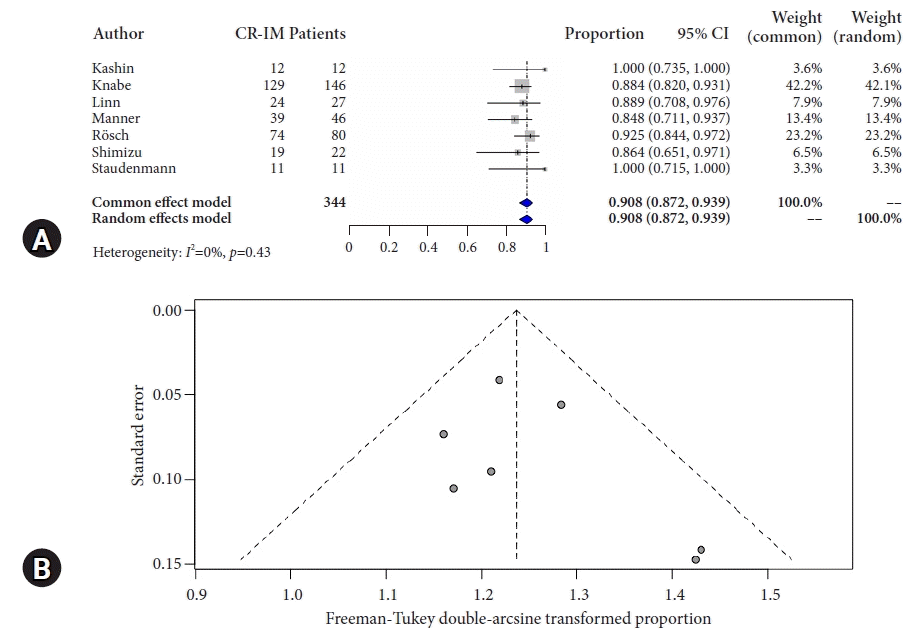
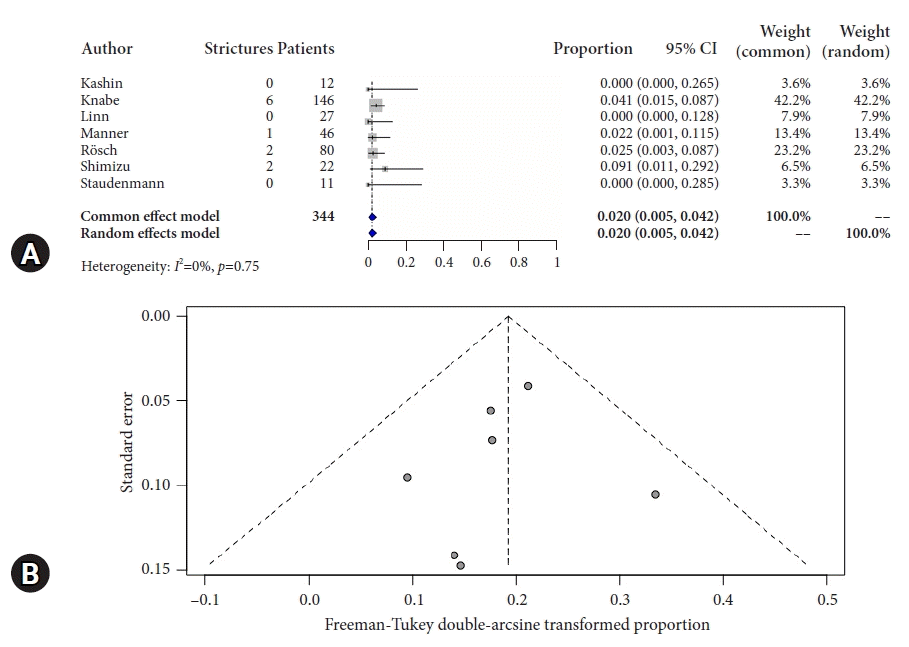
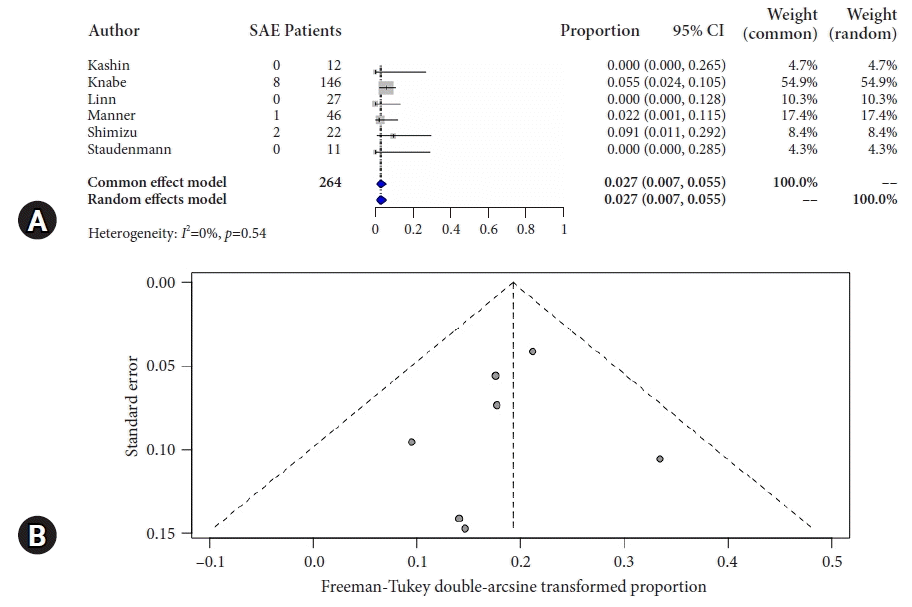
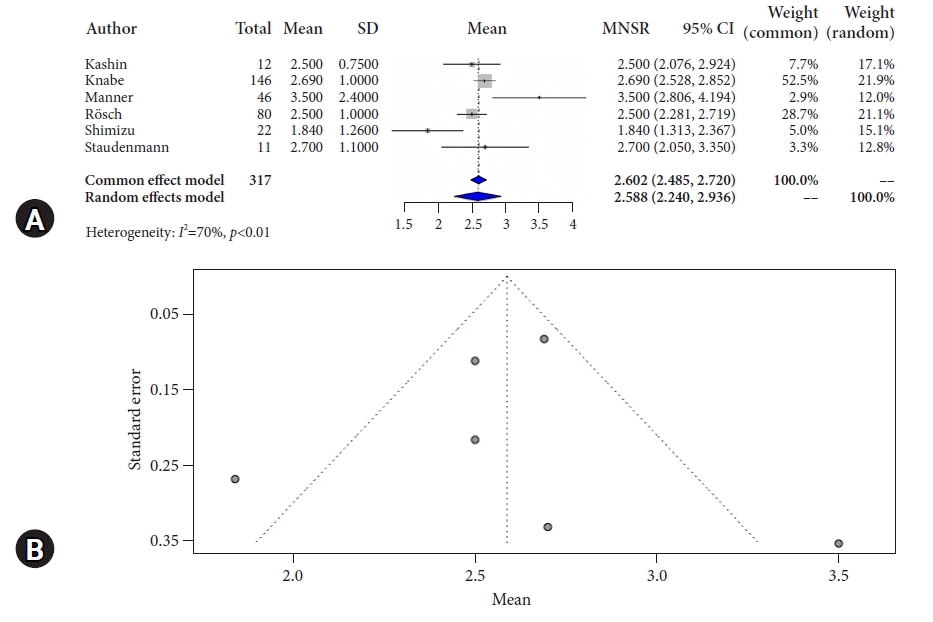




 PDF
PDF Citation
Citation Print
Print



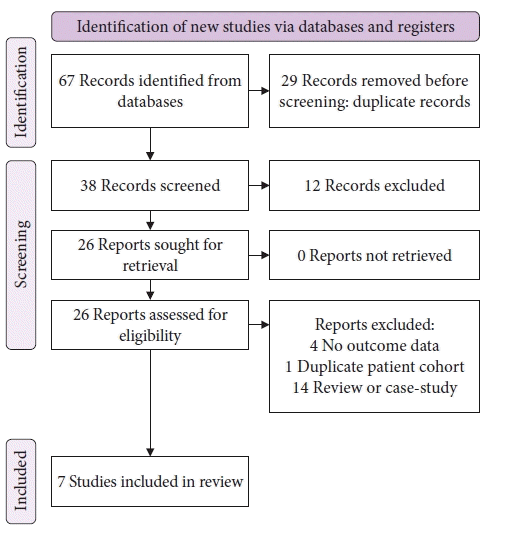
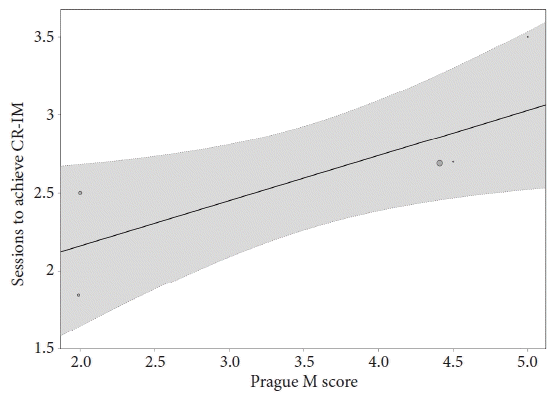
 XML Download
XML Download